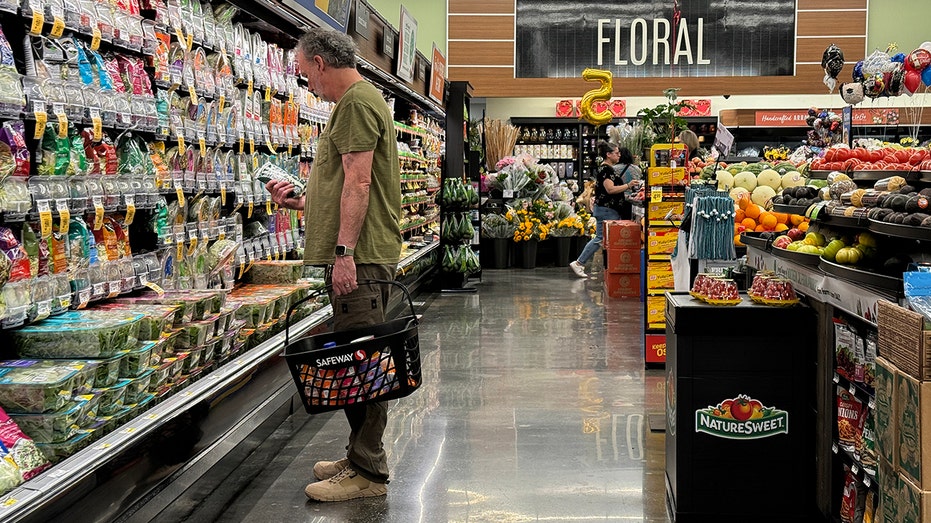Inflation unexpectedly falls to 3% in June
Labor Department releases closely watched June inflation data
Stagnant inflation marks a 'historically good' time to invest in equities, analyst says
Laffer Tengler Investments CEO and CIO Nancy Tengler explains why she's recommending investing in equities over bonds for the long term.
Inflation cooled more than expected in June, a welcome sign for the Federal Reserve even as prices remained uncomfortably high for millions of Americans.
The Labor Department on Thursday said that the consumer price index (CPI), a broad measure of how much everyday goods like gasoline, groceries and rent cost, dropped 0.1% in June from the previous month. It marked the first monthly decline since May 2020. Prices remain up 3% from the same time last year.
Both of those figures are lower than the 0.1% monthly increase and 3.1% headline gain forecast by LSEG economists.
Another data point that measures underlying inflationary pressures within the economy also moderated last month. So-called core prices, which exclude the more volatile measurements of gasoline and food in order to better assess price growth trends, increased 0.1% in June. From the same time last year, the gauge climbed 3.3% — the lowest reading since April 2021.
"While it is too soon to declare victory, signs of normalization are welcome as this is the space where the last mile of the inflation fight is taking place," said Joe Brusuelas, RSM chief economist.
US HOME PRICES JUST HIT ANOTHER ALL-TIME HIGH
Altogether, the report indicates that inflation is loosening its stranglehold on the U.S. economy, though prices still remain above the Fed's 2% target.
The softer-than-expected report comes as Federal Reserve policymakers look for evidence that high inflation has been successfully tamed as they contemplate when to start cutting interest rates. Fed Chair Jerome Powell said during congressional testimony this week that more "good" inflation data would bolster the case for rate cuts this year.
"Incoming data for the first quarter of this year did not support such greater confidence. The most recent inflation readings, however, have shown some modest further progress, and more good data would strengthen our confidence that inflation is moving sustainably toward 2%," he said.
POWELL SAYS FED WON'T RUSH TO CUT INTEREST RATES UNTIL INFLATION IS CONQUERED
| Ticker | Security | Last | Change | Change % |
|---|---|---|---|---|
| I:DJI | DOW JONES AVERAGES | 40890.49 | +55.52 | +0.14% |
| I:COMP | NASDAQ COMPOSITE INDEX | 17918.986794 | +102.05 | +0.57% |
| SP500 | S&P 500 | 5620.85 | +23.73 | +0.42% |
Stock futures surged on Thursday morning and bond yields tumbled as the report fueled hopes that the central bank could cut interest rates by September.
"The latest inflation numbers put us firmly on the path for a September Fed rate cut," said Seema Shah, chief global strategist, Principal Asset Management. "The smallest gain in core CPI since 2021 surely gives the Fed confidence that the hot CPI readings [in the first quarter] were a bump in the road, and builds momentum for multiple rate cuts this year."
HIGHER INTEREST RATES COULD COST US COMPANIES $380B IN 'SLOWLY UNFOLDING CRISIS'
High inflation has created severe financial pressures for most U.S. households, which are forced to pay more for everyday necessities like food and rent. Price hikes are particularly devastating for lower-income Americans, because they tend to spend more of their already-stretched paycheck on necessities and therefore have less flexibility to save money.

A customer shops at a Safeway store in Mill Valley, California, on June 11. (Justin Sullivan/Getty Images / Getty Images)
A 3.8% drop in gas prices last month helped to offset a 0.2% increase in both food and rent costs.
Housing has been one of the biggest drivers of inflation, but there are signs that shelter costs are easing. Rent costs rose 0.43% for the month — the smallest increase since August 2021 — and are up 5.2% from the same time last year. High rents are concerning because higher housing costs most directly and acutely affect household budgets.
GET FOX BUSINESS ON THE GO BY CLICKING HERE
Consumers also saw a rise in food prices, which have been one of the most visceral reminders of inflation for many households. The cost of food rose 0.2% over the course of the month, which included a 0.1% increase in groceries.
